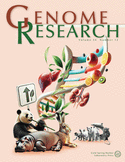LineUp: Statistical Detection of Chromosomal Homology With Application to Plant Comparative Genomics
- Steve Hampson2,5,
- Aoife McLysaght1,3,5,
- Brandon Gaut1,3,6, and
- Pierre Baldi2,4
Abstract
The identification of homologous regions between chromosomes forms the basis for studies of genome organization, comparative genomics, and evolutionary genomics. Identification of these regions can be based on either synteny or colinearity, but there are few methods to test statistically for significant evidence of homology. In the present study, we improve a preexisting method that used colinearity as the basis for statistical tests. Improvements include computational efficiency and a relaxation of the colinearity assumption. Two algorithms perform the method: FullPermutation, which searches exhaustively for runs of markers, and FastRuns, which trades faster run times for exhaustive searches. The algorithms described here are available in the LineUp package (http://www.igb.uci.edu/∼baldig/lineup). We explore the performance of both algorithms on simulated data and also on genetic map data from maize (Zea mays ssp. mays). The method has reasonable power to detect a homologous region; for example, in >90% of simulations, both algorithms detect a homologous region of 10 markers buried in a random background, even when the homologous regions have diverged by numerous inversion events. The methods were applied to four maize molecular maps. All maps indicate that the maize genome contains extensive regions of genomic duplication and multiplication. Nonetheless, maps differ substantially in the location of homologous regions, probably reflecting the incomplete nature of genetic map data. The variation among maps has important implications for evolutionary inference from genetic map data.
Footnotes
-
↵5 These authors contributed equally to this work
-
↵6 Corresponding author.
-
E-MAIL bgaut{at}uci.edu; FAX (949) 824-2181.
-
Article and publication are at http://www.genome.org/cgi/doi/10.1101/gr.814403. Article published online before print in April 2003.
-
- Received September 13, 2002.
- Accepted January 29, 2003.
- Cold Spring Harbor Laboratory Press











